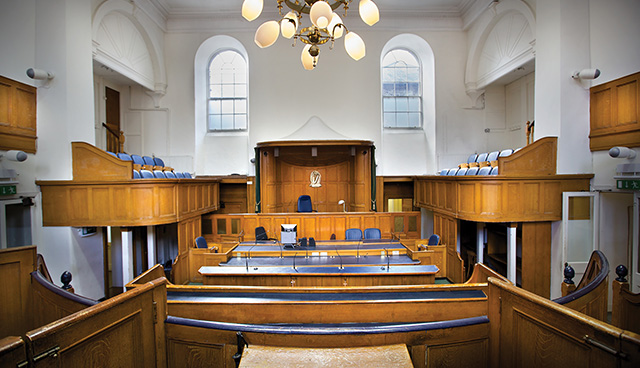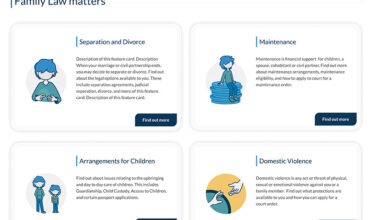Better the devil you know? An adversarial system alternative


 In the Criminal Justice (Victims of Crime) Act 2017, restorative justice was directly referenced as one component of a suite of measures about which victims must be informed. However, there are obstacles to its widespread use.
Mary Rose Gearty, SC writes.
In the Criminal Justice (Victims of Crime) Act 2017, restorative justice was directly referenced as one component of a suite of measures about which victims must be informed. However, there are obstacles to its widespread use.
Mary Rose Gearty, SC writes.
From our earliest days, we see the court room as the place in which disputes are resolved, where justice is done. Courtroom scenes are commonplace in films and soap operas, from Fair City to The Simpsons. Even as children, our picture of justice is often a picture of a court room.
Is the current process appropriate for every situation? The answer, from a public policy perspective, must be that it is not. Yet, perhaps because we are reluctant to change and wary of the unknown, provisions for a restorative justice model have yet to be promoted and used to their full potential. The adversarial model is ideal for many disputes and is the best of a range of options for many more, but it is not best suited to some cases in which victims feel traumatised by the process and the facts of the case are not in dispute. Familiarity with the adversarial process may be preventing us from embracing a far more effective model of justice in appropriate cases.
Testing or accepting the prosecution account?
There is no doubt that society needs a system to resolve disputes and that two or more complementary systems can co-exist. The type of dispute on which this article focuses is the criminal wrong, serious or otherwise. The modern system is concerned with the attempt to achieve justice between the parties who, in a criminal case, are the accused person and society. This is an important basic tenet of the system: some wrongs are so serious, they must be dealt with by the whole of society, rather than by private arrangement between the parties.
The aim of our adversarial system is to seek truth and do so through disputation. The civil law system in place in most of Europe is an investigative system. Common to both common law and civil law systems, however, is the view that if a criminal offence is alleged and denied, the account given by the complainant, or the State, must be tested to ensure that it is accurate and reliable before anyone can be convicted of that offence. If an allegation is simply accepted by society without any rigorous test of its veracity, our security as a group is deeply damaged. We thereby hand any person the means to destroy another by an allegation only.
The main drawback of this test is in the damage it can do to the complainant. This is readily seen in cases of intrafamilial rape and in assault cases. But where the parties agree on the facts, a restorative justice approach dramatically reduces the traumatic effects of the court process. Here, the search for truth has ended. This typically happens with a guilty plea. And it is here, quintessentially, that a restorative justice approach should be developed.
“The main obstacle to extending the restorative justice approach is awareness and openness to change. Consent is key…”
If an accused accepts responsibility, the benefits of restorative justice are perfectly clear: less corrosive for the victim, and potentially very rewarding for the offender and for society. Given the large number of guilty pleas recorded in the courts, a restorative justice approach must be a more socially valuable way of resolving criminal cases.
From court to conference
A court may direct the Probation and Welfare Service to hold a family conference where a child accepts responsibility for criminal behaviour. A court may also request, in any criminal hearing, that the Probation and Welfare Service arrange mediation, if the victim agrees to this.
Finally, in 2017, restorative justice was named in our legislation for the first time as one of a suite of measures about which victims must be informed.
The purpose behind such a process is restoration of dignity, insofar as that is possible, restoration of peace between the two – wrongdoer and victim – restoration of the status quo if that is possible, and restoration of the wrongdoer to his society.
The single biggest obstacle to more widespread use of the system is that it can only happen and can only be effective, by the consent of all parties. If the wrongdoer does not admit wrongdoing, it is doomed from the beginning. If the victim will not meet him, there is no benefit to the process.
The main obstacle to extending the restorative justice approach is awareness and openness to change. Consent is key and, even where the court is aware of the option and the probation service is in a position to provide it, the vast majority of victims do not consent when the option of restorative justice is explained to them.
The 2017 Act may change this as it names the process for the first time in our legislation, but also explicitly provides that victims must be fully informed at all stages of the process. As section 26 is implemented, it should be emphasised that restorative justice is available and valuable. This provision may be the catalyst that promotes greater use of this approach. The probation service offers this option, with specially trained officers and an ongoing programme to ensure that it is available as part of the normal service offered to a convicted person.
Research carried out for the European Forum for Restorative Justice shows that members of the public do not have a clear understanding of what restorative justice is. There is much that can be done to change public approaches to restorative justice. The European Forum for Restorative Justice described a successful Norwegian programme. A dedicated media agent, journalist and mediator was hired to promote restorative justice. With her team, she ensured that relevant stories were written in an accessible and interesting way so as to ensure maximum media coverage. The Forum has also published a toolkit on how to make restorative justice a more attractive option.
To date, restorative justice has not been a realistic option, and is not always considered in cases in which it may have enormous effect. Even when lawyers are aware of its benefits, there is little point in suggesting it if it is an entirely foreign idea to clients and victims.
Back to changing perspectives
Restorative justice has yet to gain traction in the traditional sentencing hearing. Hence the name of this article. Without a serious attempt to promote and explore the benefits of restorative justice, few will avail of these services and we will stick with the devil we know. In the right cases, restorative justice can be life-changing for all involved. The legislative provisions are in place, the Probation Service is actively preparing for the implementation of more such orders, all that remains is for all those involved to embrace and promote this approach. While justice remains in the courtroom, a restorative approach can, and should, move to the conference room.





